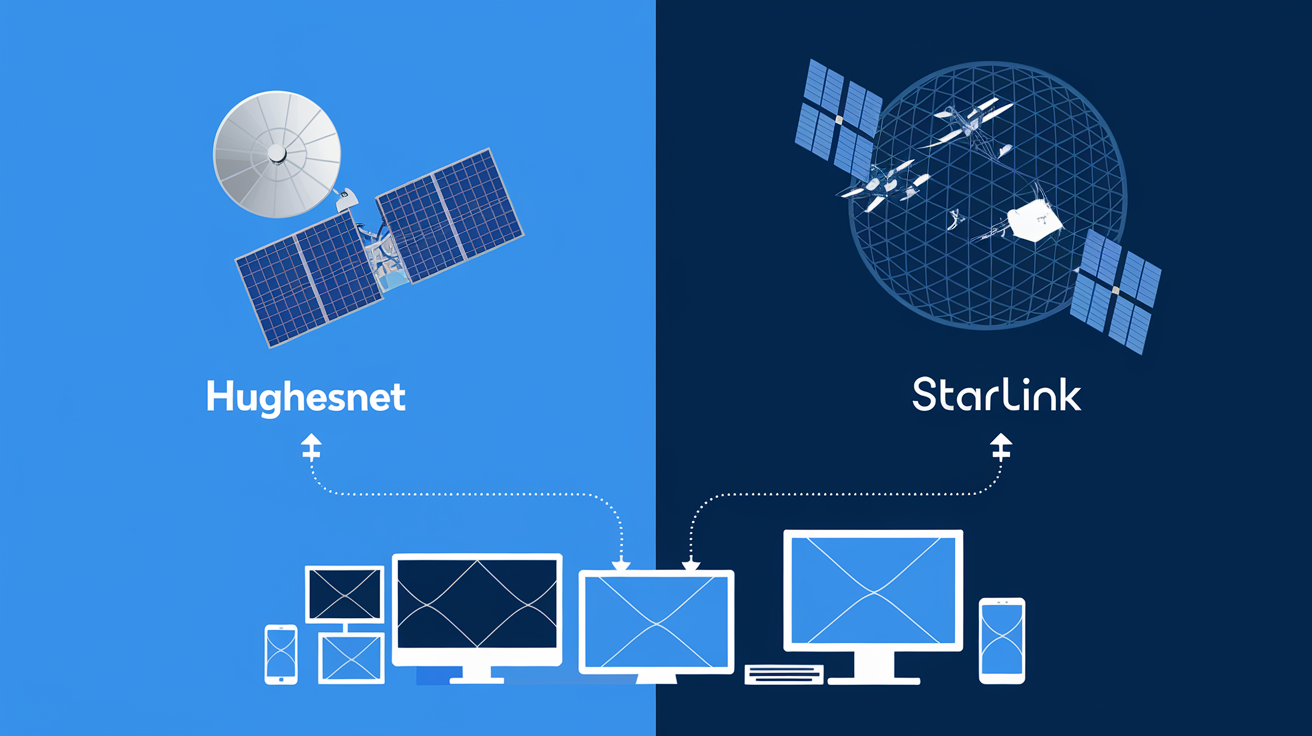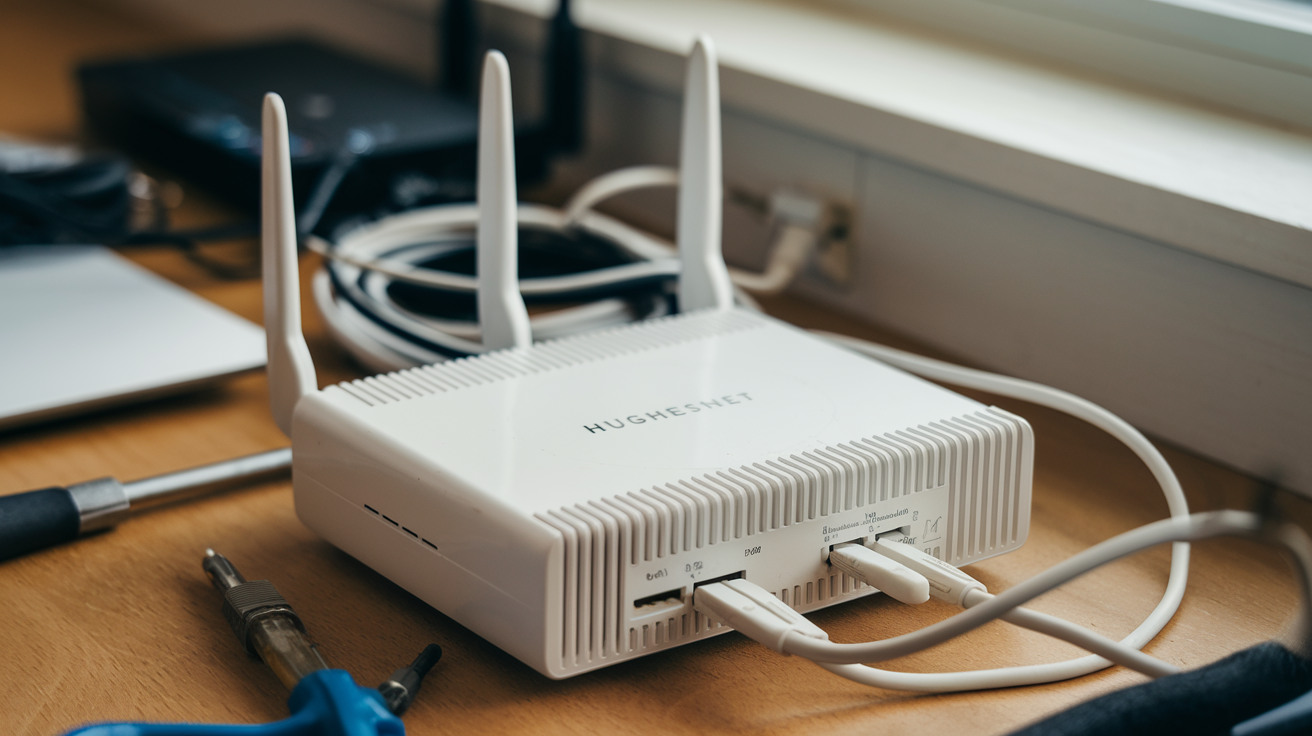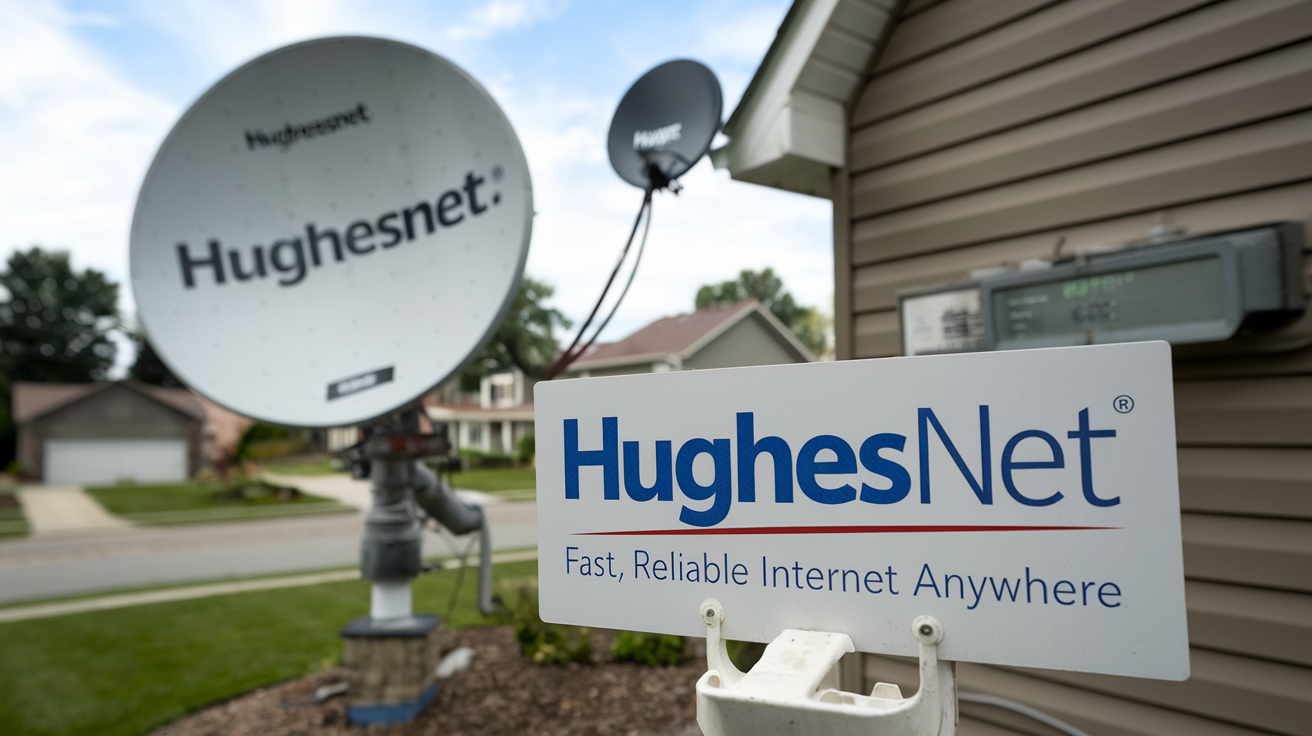-
Posted on: 08 Aug 2024

-
This connection was also an issue for internet users living in rural areas. The two major types of broadband networks are cable and DSL, which are only available in concentrated areas such as urban and suburban cities. SATCOM is now the only viable choice left in the country for broadband internet. Hughesnet is one of the most well-known satellite internet services that operates with a focus on rural customers. However, does Hughesnet meet the basic requirements of usage in rural areas? This article aims to discuss the strengths and weaknesses of the Hughesnet internet in the following circumstances of usage in rural regions:
As we can see, several advantages of Hughesnet would benefit rural areas.
Hughesnet offers five key advantages for rural regions:
- Availability: While cable and DSL rely on physical cables to provide service, Hughesnet uses satellite cables that serve the whole continental United States as well as parts of Alaska and Hawaii. You do not necessarily require a satellite dish to access the service as long as you can view the southern sky prominently.
- High speeds: Hughesnet currently offers its Gen5 service, which promises download speeds of 25Mbps and an upload speed of 3Mbps. This throughput is not as fast as fiber but it is fine and at par with the basic cable/DSL plans of today. While it may be sufficient for web browsing, video streaming, and basic work-from-home applications for the majority of households, 25/3Mbps is what the government is proposing.
- No data caps: Previous Hughesnet plans limited the amount of data that could be used and if the consumer went over the limit, they would be charged extra making the service unsuitable for high bandwidth usage. However, all Hughesnet packages have what is called “Anytime data” which ranges from 50GB per month and does not attract overages. 50GB is used up easily, watching movies or game downloads; but this makes up for the lighter surfing throughout the remainder of the month.
- Rural discounts: Hughesnet also has regulated its prices and has seasonal and new customer offers which makes the price lower for a new customer from the rural area. However, compared to its retail competition, Hughesnet can be cost-effective when matched with government programs such as the FCC’s Rural Digital Opportunity Fund, which subsidizes infrastructure build-outs in difficult-to-reach areas.
- No contract requirements: Hughesnet emerged as a satellite internet company that enables its users to terminate their subscriptions at any time without being charged penalties for early cancellation. You are only required to return the equipment in good condition and good working condition. This means that rural users have an opportunity to pull out of the service in case it does not fit their requirements.
Hughesnet has some drawbacks that are detrimental to its customers in rural areas.
Despite the benefits above, Hughesnet comes with some significant downsides, especially for rural users: Despite the benefits above, Hughesnet comes with some significant downsides, especially for rural users:
- Slow speeds after data allowances: Once you go beyond the 50GB “anytime data” quota per month, the speeds are reduced to incredibly slow, anywhere between 1-3 Mbps. This results in even basic browsing of the web being a cause of major frustration. Additional information can be bought but this comes with a premium price of $2-$15 for every GB.
- High latency: All forms of geostationary satellite internet have high latency because of the fundamental physics of beaming signals about 35,768 kilometers there and back to space. Hughesnet latency averages 600ms. Such latency degrades real-time applications such as video conferencing, voice calls, gaming, or web browsing to unbearable levels.
- Weather-related disruptions: A mild shower or storm can cut the satellite signals for short periods, especially during a snowstorm or windy season. These distortions are more common with people living at high or low latitudes where satellite placement results in positioning the antennas lower.
- Expensive equipment fees: Hughesnet practices mandatory equipment rental for obligatory accessories such as the antennas and the modems, which cost between $15 and more per month. Therefore, the economic picture of the service is not complete with the stated $60 per month service rate. Also, computing devices rented out have to be returned after service cancellation or else extra rental fees come into play.
Is Hughesnet Worth It for Rural Communities?
Hughesnet can be handy for internet connection for anyone who resides several miles away from any other type of broadband connection. That is why, at first, the service seems appealing due to its availability, offered speed, and discounted rates in rural areas. However, there are various drawbacks, such as high latency, rather frequent weather interferences, overage costs, concealed equipment costs, and contract requirements, which reveal certain long-term inconveniences for some rural consumers.
Satellite internet should be viewed as a transition solution for many rural customers, as they await fiberoptic, cable, wireless 5G, or low-Earth orbit satellite services from Starlink and others to arrive in their area. Today, Hughesnet provides only basic Internet connectivity needed for less demanding home and business use in the future, but the quality and stability requirements for their usage are significantly higher.
Well, can Hughesnet suffice for rural neighborhoods? The answer to this question highly depends on the reader’s particular utilization needs. Hughesnet should be sufficient for light web browsing and getting to email, which should be enough to help fill the rural broadband void. However, for media-intense, latency-demanding, or business-critical applications, Hughesnet probably provides a less than satisfactory experience to rurally-based users, who might have to wait for better internet options to arrive in their areas that are yet to be addressed by this provider.





